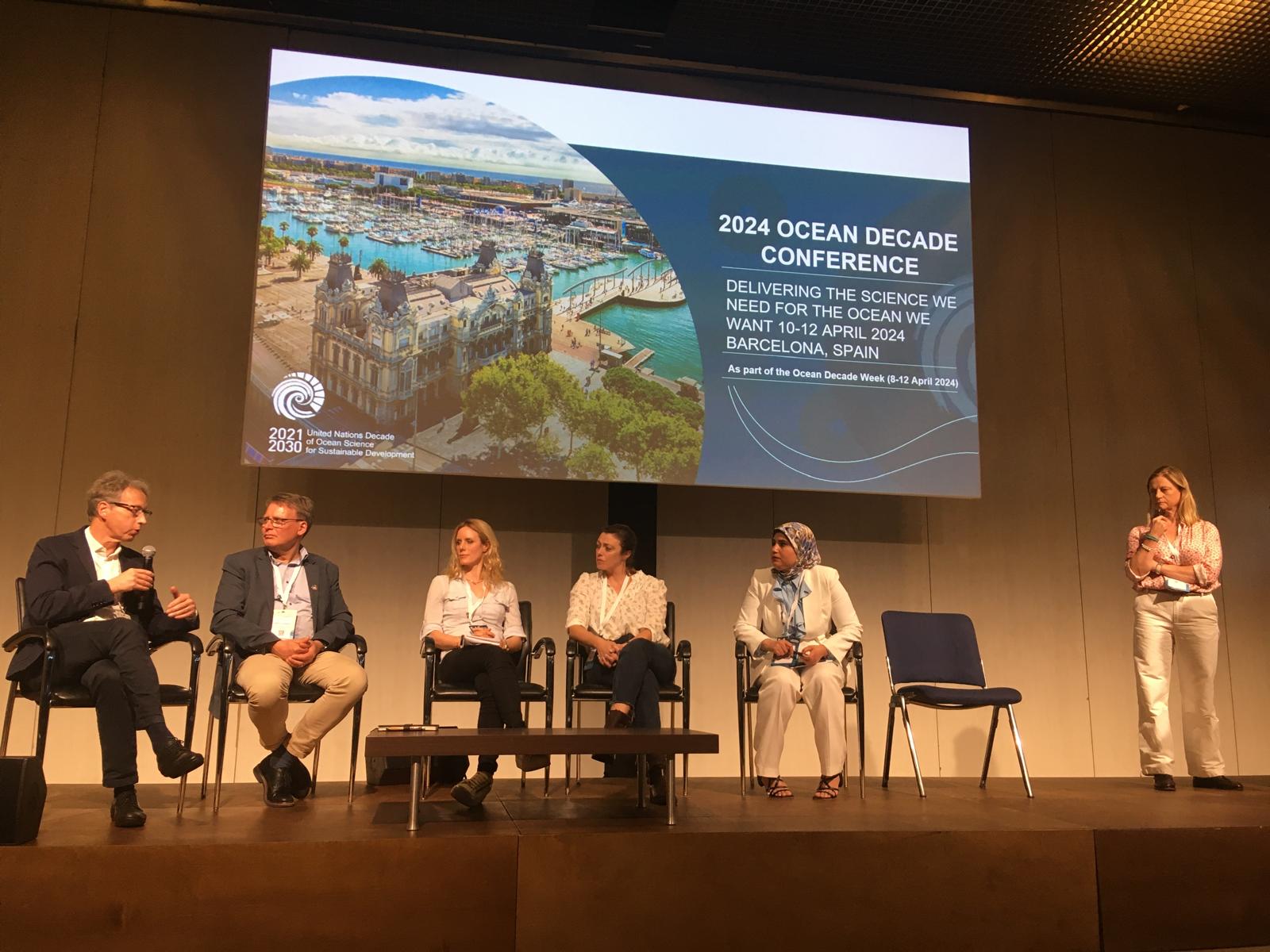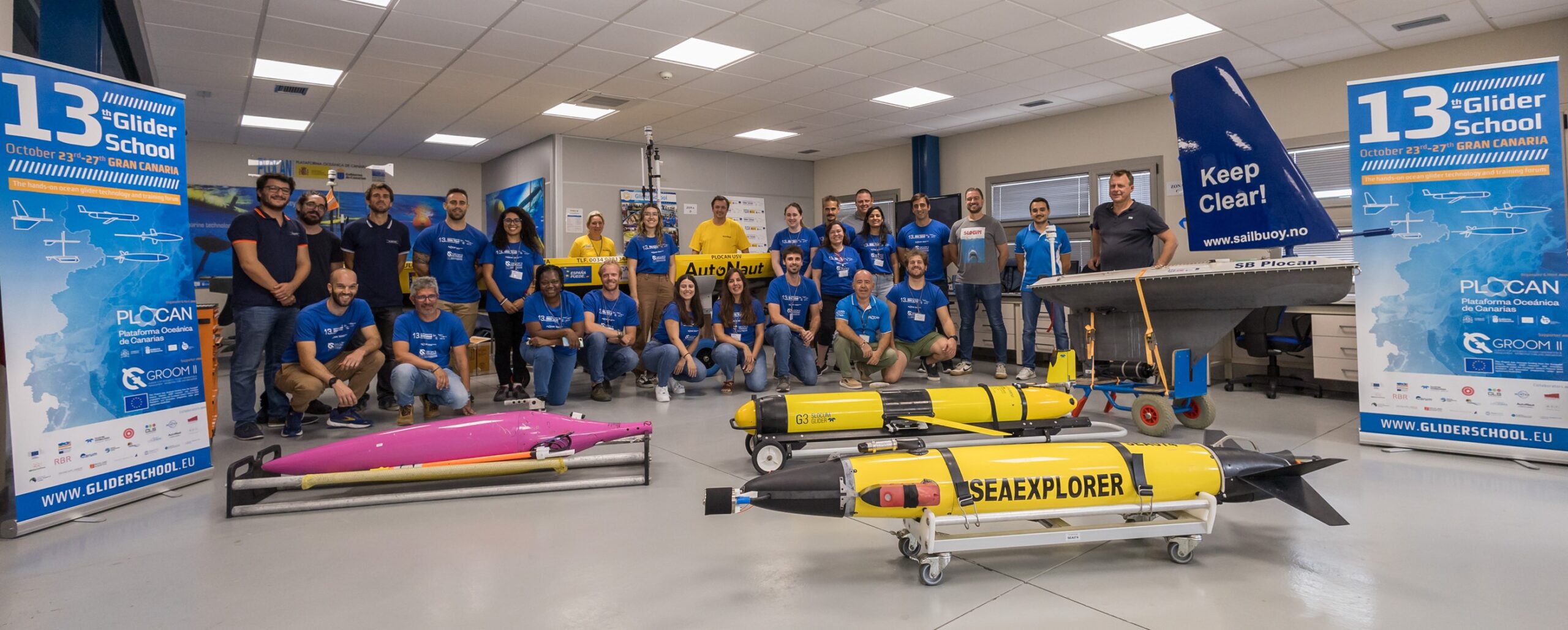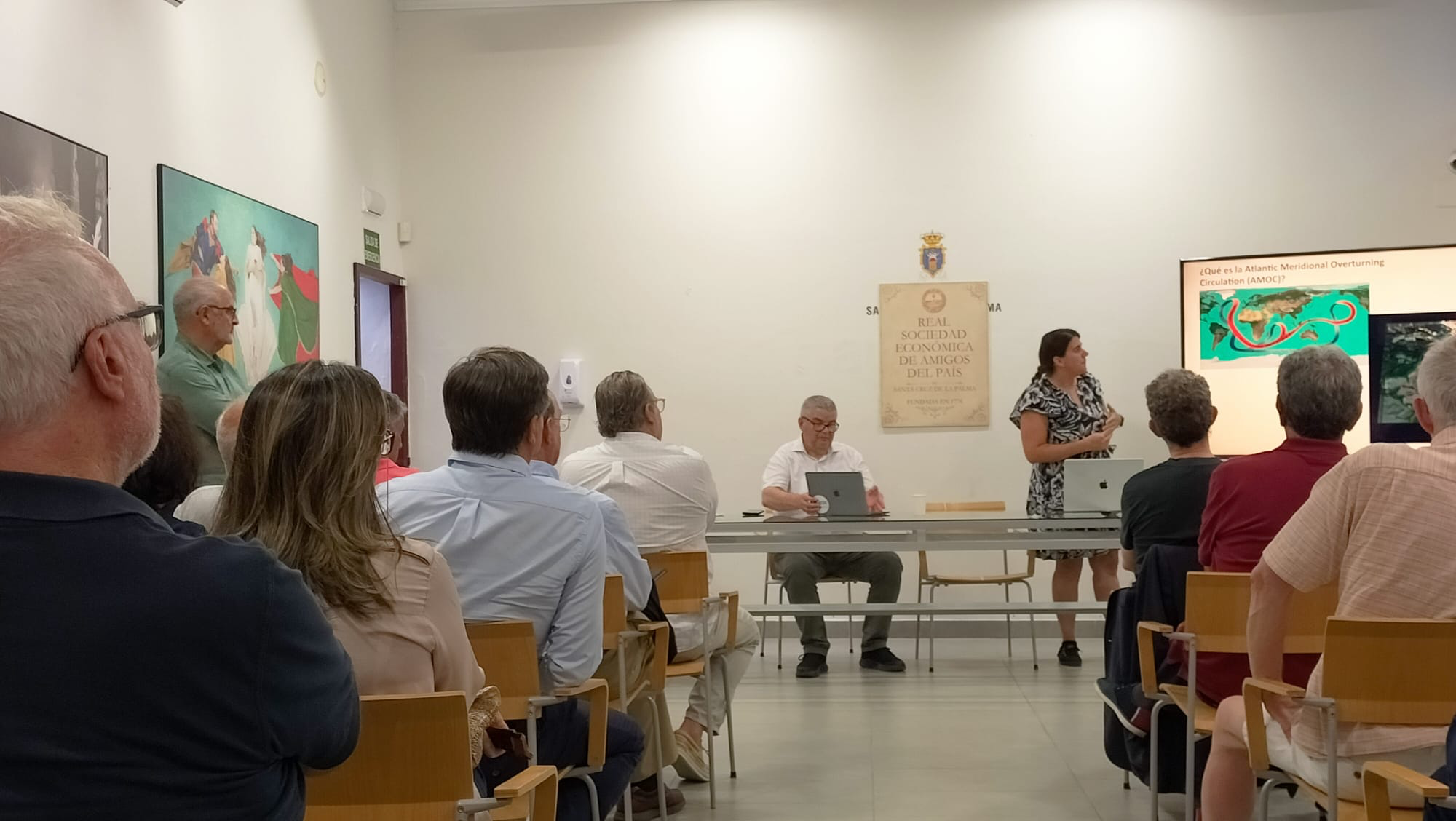[vc_row type=”in_container” full_screen_row_position=”middle” column_margin=”default” scene_position=”center” text_color=”dark” text_align=”left” overlay_strength=”0.3″ shape_divider_position=”bottom” bg_image_animation=”none”][vc_column column_padding=”no-extra-padding” column_padding_position=”all” background_color_opacity=”1″ background_hover_color_opacity=”1″ column_link_target=”_self” column_shadow=”none” column_border_radius=”none” width=”1/1″ tablet_width_inherit=”default” tablet_text_alignment=”default” phone_text_alignment=”default” overlay_strength=”0.3″ column_border_width=”none” column_border_style=”solid” bg_image_animation=”none”][vc_column_text]The director of the Oceanic Platform of the Canary Islands (PLOCAN), José Joaquín Hernández Brito, said that there is a need for more data, for a much greater understanding of the ocean, to generate tangible results for management and for a new responsible relationship with the environment.
In a talk entitled “The Science We Need for the Ocean We Want” (the slogan of the Decade of Ocean Science), Hernández Brito participated in the second session of the Workshops on the Sea and the Blue Economy. This digital event is organised by the public enterprise Proexca in conjunction with the Maritime Cluster of the Canary Islands, the Marine Science Technology Centre and PLOCAN within the framework of the European project SmartBlue_F.
In his presentation he outlined the essential data required by science and indicated that it is necessary to map the oceans, only 5% of which is known. He explained that knowledge of the oceans is required at three levels: its forests, its deserts, and its vertical structure, where spectacular migrations of organisms take place every day following the cycles of light.
The director of PLOCAN argued that these data must be integrated and shared, and used to generate knowledge leading to findings that will provide a healthy, productive, predictable, resilient ocean for future generations in better conditions, while creating jobs and social and economic value.
He explained that its resources must be better understood, especially its natural heritage, its renewable resources, and the processes that control and affect them; its biodiversity, the health of the environment and its evolution; and this knowledge is needed across the planet and quickly, before it is too late.
The director of PLOCAN explained that to acquire this knowledge we need high-resolution measurements of all these variables for 71% of the planet, at an average depth of 4 km.
He also said that it is a priority that people become aware of the survival of species: that future survival means ensuring that the planet will continue to produce food and energy for future generations; that the ocean is the planet’s life-support system, that it is finite and vulnerable, and that human action is changing it to such an extent that it will no longer be able to maintain conditions that are favourable to the life of our species.
He called for smart and cost-effective measuring and monitoring of the oceans, which should be done by harnessing marine activities: shipping, fishing, aquaculture, infrastructure projects, and renewable resources. The technologies – sensors, communications, robotics – enable ships to record marine data continuously along their routes. Similarly, offshore wind farms or aquaculture facilities will also be smart observatories, which can record CO2 flows, or the essential variables defined as critical for global measurement.
These monitoring tasks, he continued, must produce data and metadata that are interoperable so that they can be easily shared, and will require new public policies that reward public-private partnerships so that data measured by businesses may be shared to form part of the global commons for the benefit of all.
Hernández Brito pointed out that all this knowledge will favour sustainable consumption as it will offer consumers ways to responsibly choose one product or another based on how it has been produced and whether, in the process, it contributes to our understanding of the environment.[/vc_column_text][/vc_column][/vc_row]



